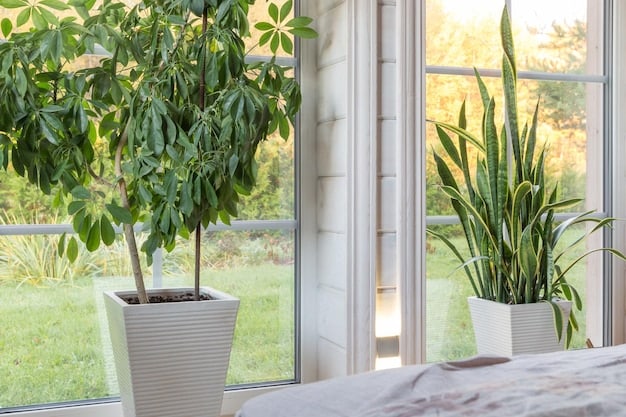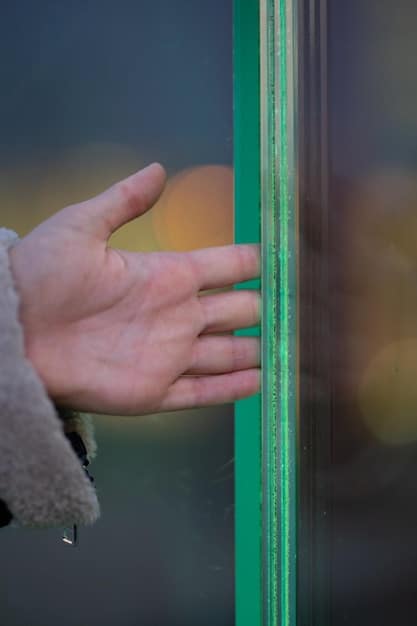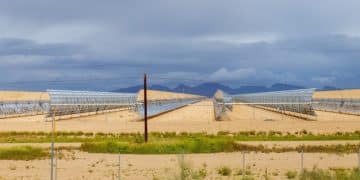5 Unexpected Ways to Cut Your Home’s Energy Use by 15% in 2025

Reducing your home’s energy consumption by 15% in 2025 can be achieved through innovative methods like smart window film, optimizing phantom loads, embracing thermal curtains, harnessing green roofs, and investing in educational energy audits.
Looking to slash your energy bills and reduce your carbon footprint? Discover 5 Unexpected Ways to Reduce Your Home’s Energy Consumption by 15% in 2025, offering practical solutions you might not have considered.
Unveiling Hidden Energy Vampires in Your Home
Many homeowners are unaware of the various hidden sources that contribute to energy wastage. Identifying and addressing these energy vampires can significantly reduce your energy consumption without requiring major renovations.
The Phantom Load Problem
Phantom loads, also known as standby power, refer to the electricity consumed by appliances and electronics when they are turned off or in standby mode. This often-overlooked source can account for a significant portion of your energy bill.
- Identify and Unplug: Regularly check and unplug devices that are not in use.
- Smart Power Strips: Invest in smart power strips that automatically cut off power to devices when they are not being used.
- Energy-Efficient Alternatives: Replace older appliances with energy-efficient models that consume less standby power.
Addressing phantom loads is a simple yet effective way to reduce your home’s energy consumption. Making a conscious effort to unplug or use smart power strips can lead to substantial savings over time.

Revolutionizing Insulation with Thermal Curtains
Proper insulation is crucial for maintaining a comfortable indoor temperature and reducing energy consumption. Thermal curtains offer a simple and cost-effective way to improve insulation.
Benefits of Thermal Curtains
Thermal curtains are designed to block out sunlight in the summer and retain heat in the winter. These curtains can significantly reduce the amount of energy required to heat or cool your home.
- Material Matters: Choose curtains made from heavy, tightly woven fabrics for maximum insulation.
- Proper Installation: Ensure the curtains are installed close to the window and extend beyond the frame to prevent drafts.
- Seasonal Use: Adjust the curtains seasonally to maximize their energy-saving benefits.
Thermal curtains are an excellent way to enhance your home’s energy efficiency without the need for expensive renovations. Strategic use can help maintain a consistent temperature and reduce your reliance on heating and cooling systems.
Embracing Green Roofs for Natural Cooling
Green roofs, also known as living roofs, are gaining popularity as a sustainable way to reduce energy consumption. These roofs provide natural insulation and cooling benefits.
How Green Roofs Work
Green roofs consist of a layer of vegetation planted over a waterproof membrane. This layer of vegetation absorbs sunlight and provides insulation, reducing the amount of heat that enters your home.
- Insulation: The soil and vegetation act as a natural insulator, keeping your home cooler in the summer and warmer in the winter.
- Water Management: Green roofs can reduce stormwater runoff, which helps to reduce flooding and erosion.
- Aesthetic Appeal: Green roofs add beauty and value to your home while providing habitat for beneficial insects and birds.
Installing a green roof can be a significant investment, but the long-term benefits in terms of energy savings and environmental impact are substantial. Consider consulting with a professional to determine if a green roof is right for your home.
Smart Window Film: The Future of Energy Efficiency
Smart window film is an innovative technology that can significantly reduce energy consumption by regulating the amount of sunlight that enters your home. This film can be programmed to adjust to changing weather conditions and sunlight levels.

Understanding Smart Window Film
Smart window film is made from a thin, transparent material that can be applied to existing windows. The film contains tiny particles that react to electricity, allowing it to change from transparent to opaque.
- Automatic Adjustment: The film automatically adjusts to changing sunlight levels, reducing glare and heat gain in the summer.
- Energy Savings: By reducing the need for air conditioning, smart window film can significantly lower your energy bills.
- Privacy Control: The film can also be programmed to provide privacy by becoming opaque at the touch of a button.
Installation Considerations
Installing smart window film requires professional installation to ensure proper adhesion and functionality. The cost of installation can vary depending on the size and number of windows in your home.
Smart window film represents a cutting-edge solution for enhancing energy efficiency and creating a more comfortable living environment. As technology advances, this innovative product is set to become more accessible and cost-effective.
Investing in Educational Energy Audits
An educational energy audit is a comprehensive assessment of your home’s energy consumption, conducted by a trained professional. Unlike a standard audit, an educational audit empowers homeowners to understand their energy usage and implement effective energy-saving strategies through personalized guidance and recommendations.
What to Expect from an Educational Audit
During an educational energy audit, the auditor will inspect your home’s insulation, HVAC system, appliances, and lighting. They will also use specialized equipment to measure air leaks and identify areas where energy is being wasted.
- Hands-On Learning: Homeowners get to accompany the auditor and learn about how each component of their home contributes to overall energy consumption.
- Customized Solutions: Auditors provide a detailed report with recommendations tailored to the homeowner’s specific needs and lifestyle.
- Behavioral Changes: The audit stresses actionable steps on how occupants can modify their behavior to improve energy efficiency.
An educational energy audit is a valuable investment for homeowners who are serious about reducing their energy consumption. By gaining a deeper understanding of how their home uses energy, homeowners can make informed decisions about energy-saving upgrades and behavioral changes.
Optimizing Appliance Usage for Energy Savings
The way you use your appliances can have a significant impact on your home’s energy consumption. By adopting smarter habits and optimizing appliance usage, you can achieve significant energy savings without purchasing new equipment.
Smart Appliance Strategies
From refrigerators to washing machines, implementing best practices for appliance usage can make a substantial difference in reducing energy waste. These strategies are often simple to implement and require minimal effort.
- Refrigerator Efficiency: Keep your refrigerator properly maintained by cleaning the condenser coils regularly and ensuring the door seals are tight. Set the temperature to the optimal setting for food preservation, typically between 37°F and 40°F (3°C and 4°C).
- Laundry Habits: Wash clothes in cold water whenever possible, as heating water accounts for a significant portion of the energy used by washing machines. Run full loads and use the appropriate settings for the type of laundry being washed.
- Dishwasher Efficiency: Run the dishwasher only when it’s fully loaded and use the energy-saving settings. Avoid pre-rinsing dishes, as most modern dishwashers are designed to clean effectively without it.
Optimizing appliance usage is a straightforward and effective approach to reducing your home’s energy consumption. By adopting these habits, you can lower your energy bills and contribute to a greener environment.
| Key Point | Brief Description |
|---|---|
| 💡 Phantom Loads | Unplug devices and use smart power strips to eliminate standby power consumption. |
| 🌡️ Thermal Curtains | Install thermal curtains to block sunlight in the summer and retain heat in the winter, improving insulation. |
| 🌿 Green Roofs | Implement a green roof for natural insulation, cooling benefits, and stormwater management. |
| 🔍 Energy Audits | Invest in educational energy audits to gain personalized insights and strategies for energy savings. |
Frequently Asked Questions (FAQ)
▼
Common phantom loads include chargers (phone, laptop), TVs, DVD players, game consoles, and coffee makers. They consume energy even when not actively in use. Unplugging them can save energy.
▼
Thermal curtains are significantly more effective because of their multiple layers and heavier materials. They can block up to 25% more sunlight, reducing heat gain and loss and thus saving energy.
▼
Not all homes can support a green roof. The roof needs adequate structural support to handle the weight of the soil and vegetation. Consulting a professional ensures compatibility and proper installation.
▼
The cost of smart window film varies widely depending on the window size, film type, and installation complexity. It’s best to get a quote from a certified installer for an accurate estimate.
▼
An educational energy audit involves a thorough home assessment focused on energy usage. The auditor teaches the homeowner about their usage patterns and suggests customized strategies for improvements.
Conclusion
By implementing these five unexpected strategies – optimizing appliance usage, tackling phantom loads, leveraging thermal curtains, considering green roofs, investing in educational energy audits, and exploring smart window film – you can significantly reduce your home’s energy consumption by 15% in 2025 and contribute to a more sustainable future while enjoying lower energy bills.





